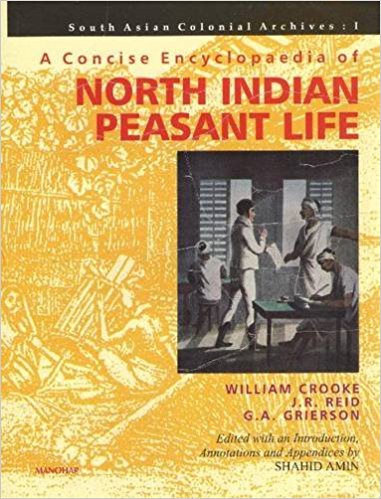Since the beginning of colonial expansion in the late eighteenth century a wealth of material has been generated by colonial administration and scholars. This documentation has often formed the base material of the writings of future historians, and often provides us the only non-vernacular account of local practices and beliefs. It adds to the official information of the colonial record and enables historians to reconstruct agrarian relations and practices under consideration in their historical research. Three such texts from North Western Provinces and Awadh were written in the late 19th century soon after the annexation of the United Provinces and Awadh and form a part of the Encyclopaedia under review. Part one of the book includes one of the earliest accounts of peasant life, William Crooke’s Materials for a Rural and Agricultural Glossary in North Western Provinces and Oudh (1879) which provided a compendium of implements, soils, weights, measures and trading relations in agricultural and rural life of the region. It also influenced several other writings of the same nature like George Grierson’s Peasant Life in Bihar (1889).
The second part highlights how settlement reports provided an important insight into the agricultural systems of North India. It includes J.R. Reid’s ‘Materials on the Agricultural System’ from Azamgarh Settlement Report (1881) gives a concise picture of the seasonal cultivation of the area. The cultural aspects of rural life are represented in the third part

